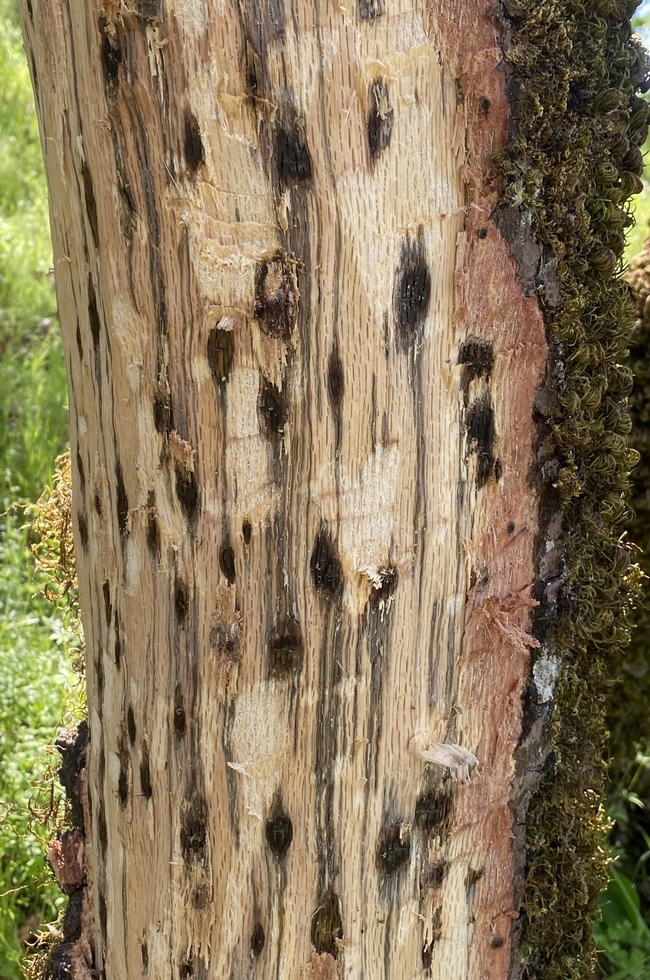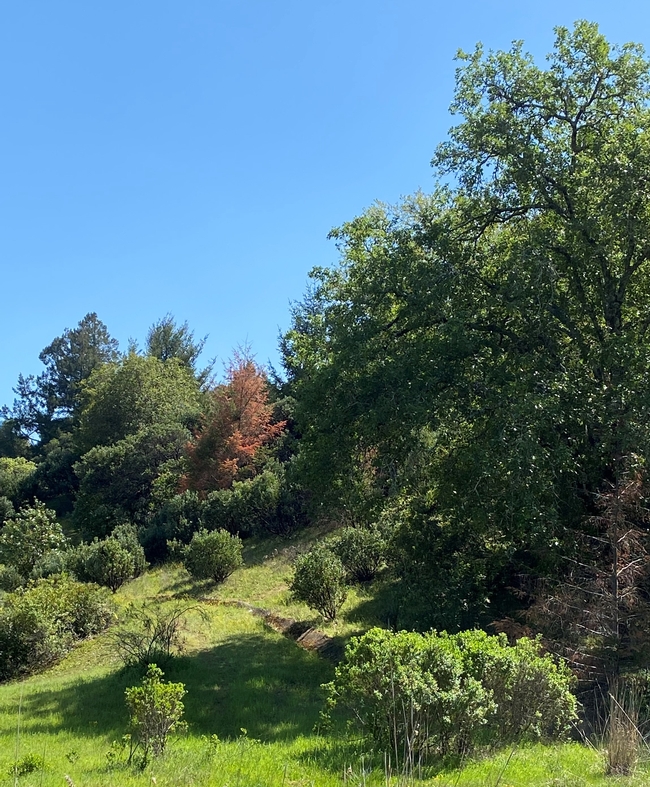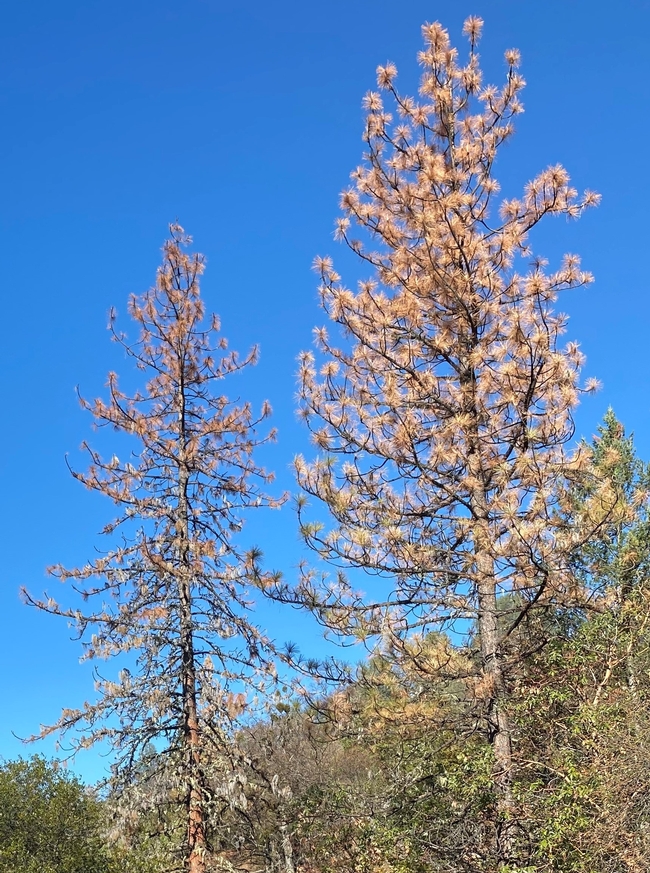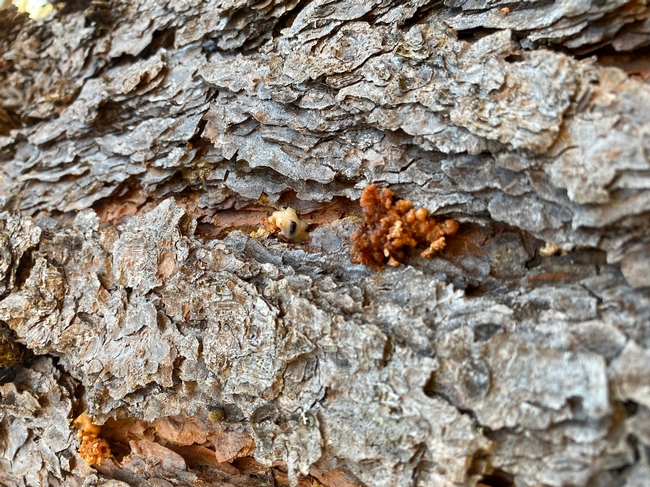by Michael I. Jones, PhD, UCCE Forest Advisor, Mendocino, Lake, & Sonoma County
As someone who has studied forest health for a while, I have developed the rather unfortunate habit of noticing only the red and brown canopies that appear in a sea of green (my wife says it makes visiting the forest with me rather depressing). Unfortunately, the tell-tale sign that a tree just died has become a common sight in the coastal forests over the past few years. While there is a suite of forest health issues (invasive species, fire suppression, and climate change to name a few) that are likely driving this decline and dieback, there is one that I am currently most concerned about: Drought.
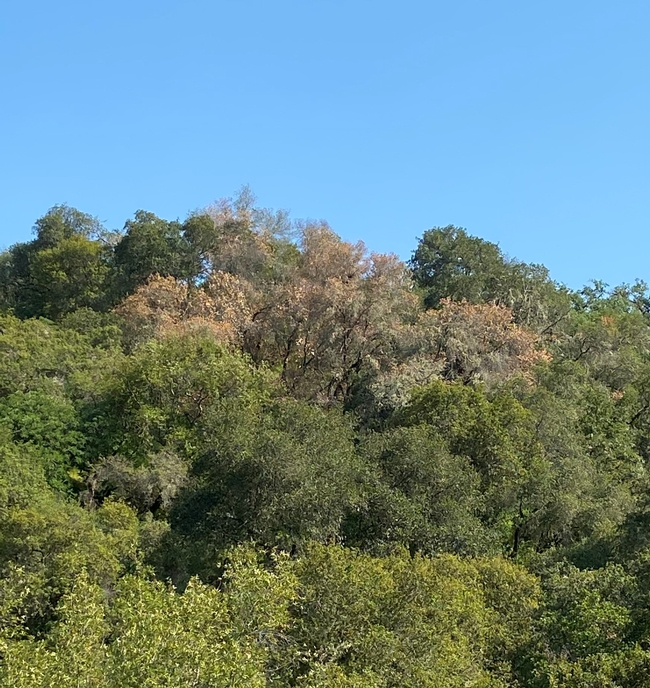
I noticed the first signs that drought stress was becoming an issue in early spring, when ponderosa pine began to die in eastern Mendocino County. Upon investigation, I found extensive western bark beetle and red turpentine beetle activity. I suspect the insects had established in fire stressed trees and their populations had built up over the past few years, to the point where they were spreading to trees that had no or little fire damage and into areas where there had not yet been wildfire. My colleagues and I have now observed ponderosa pine morality from northern Mendocino to northern Napa. It would seem we are at the initial stages of a western pine beetle outbreak, and I would suspect we will see a significant increase in pine mortality throughout the summer and into the next year.
Another conifer I have been getting questions about recently is Douglas-fir. Over the past few years there has been noticeable Douglas-fir decline and mortality, especially in young trees that have encroached into oak woodlands and rangeland. While this is an indication of unhealthy forests and stressed trees, I do not necessarily see this as a serious forest health issue since the expansion and growth of Douglas-fir in high densities into other habitats is the result of forest succession in the absence of fire. So, in my opinion the decline of some of these trees is a natural process resulting from the stress of growing on low quality sites and competing for water and nutrients, resulting in insect and disease infestations. Drought further increasing water stress and accelerates the rate of decline and dieback. However, I have yet to see extensive Douglas-fir mortality in high quality sites such as north facing slopes with moist, mild climates.
The next significant sign that drought stress was becoming an issue was the decline and mortality of interior live oak and CA Black oak in southern Mendocino County (Hopland). Upon investigating several clusters of declining trees, I found that the mortality was not associated with sudden oak death, but instead appeared to be caused by outbreaks of western oak bark beetle, a native bark beetle that is attracted to stressed trees. While many of the declining trees have extensive evidence of the bark beetle activity, several trees have only a few galleries, but were covered in cankers which are indicative of foamy bark canker, a disease caused by a pathogen the bark beetle vectors. While I have only observed this decline in the Hopland area, western oak bark beetle is found throughout California and could easily outbreak in other areas where oaks are highly drought stressed. Additionally, other native oak pests such as twig blight, branch canker, pit scale and invasive pests such as sudden oak death and Mediterranean oak borer are becoming more common in drought stressed trees throughout the Coastal Range.
What can we do about forest health and the drought? Many of the pests I mentioned are native and are simply acting as natural disturbances that help cull stressed and dying trees and begin the process of nutrient cycling. While eradicating pests or preventing them from infesting trees is extremely difficult, their populations can be controlled by pruning or removing and destroying heavily infested material. Suppressing insect and disease populations will not prevent all tree mortality but can help mitigate outbreaks that could spread to relatively healthy trees.
Thinning is another way to help the forest gain resiliency to drought. It can improve tree vigor through the reduction of competition and increase access to water and nutrients. But, when thinning is not an option, such as in an oak woodland or savannah and trees are still showing drought stress, then hopefully the drought adaptations these trees have evolved will be enough to help them survive.
For more information check out the UCCE Mendocino – Forest Health webpage at cemendocino.ucanr.edu. Also, feel free to contact me if you have questions, mjones@ucanr.edu or (707) 463-4495.
Attached Images:
